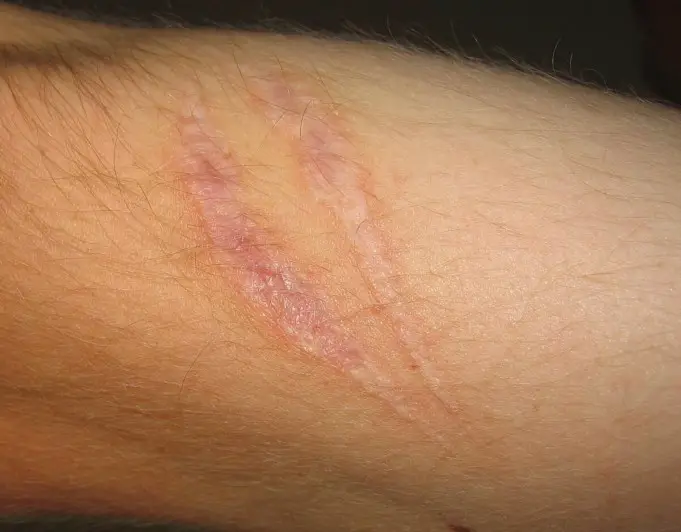Scarring is actually part of the skin’s natural healing process on being injured and exposed to external pathogens. Unfortunately, scars are seldom pretty and while a lot of them heal completely and leave little to nothing behind for us to worry about, some just don’t fade away that easily. We realize that scaring is an issue when wanting to look attractive and feeling that the scars are noticeable to others who may find them a turn-off.
On that note, let’s take a look at the four common types of scars, which a lot of us develop over the course of our lives for varying reasons and explore some effective ways to get rid of those ugly marks for good.
Hypertrophic Scars
When excess tissue develops over the cut or skin opening during the healing process, a visible hypertrophic scar is formed. It’s often an indication that the infection was pretty severe, and it generally accompanies deep cuts more often than it does shallow cuts.
These are the scars that you can touch and feel as raised bumps on the skin, even after the wound has healed a long time ago. Once present, they don’t go away. They may reduce in size and severity over time, but they neither fade nor disappear with age.
If you want to treat hypertrophic scars non-surgically, try silicone sheets for fast action or even a silicone gel if you are not in a hurry to resolve the medical issue quickly.Both of these approaches are non-invasive and don’t cause discomfort when used during an active day.
Atrophic Scars
Unlike hypertrophic scars, atrophic scars do not bulge outwardsand are instead depressed, completely flat, or feel serrated when touched with the tip of your finger. Not to be confused with hyperpigmentation, atrophic scars invariably indicate tissue damage below the surface of the top layer of skin. A single round of microdermabrasion, laser treatment, or soft tissue filling are your usual choices of treatment to deal effectively with atrophic scars. Several treatments may be necessary to help the scar fade away nicely so it’s no longer a distraction.
Stretch Marks
The chief causes of stretch marks include pregnancy, obesity, massive weight loss, and massive muscle gain. In the case of massive weight loss, this is the reason why contestants on later rounds of the rapid weight loss show The Biggest Loser start to wear a t-shirt at weekly weigh-ins; they’re hiding the stretch marks that are already developing.
It doesn’t really matter what the cause of them is, stretch marks are an indication that internal pressure from the underlying fat and muscle has caused the skin to tear internally at certain places. They start out as red or purple in color but usually turn white after a period of time.
When a lot of these begin to appear on specific areas of the body, it can look quite unsightly and be distressing. Fortunately, Dermaclara stretch mark reviews clearly shows that the Clarafuse Silicone Fusion Stretch Mark Treatment is the best non-surgical method to permanently get rid of stretch marks within a reasonably short time. They’re non-invasive, silicone-based, and easy to use.
Acne Scars
A lot of people don’t take acne seriously because it’s common, but that’s almost like saying it’s okay to have HIV because it’s quite common these days! Granted, it won’t exactly try to kill you like HIV, but severe forms of acne like nodulocystic acne or acne conglobate can wreak havoc on your social life, self-esteem, and worst of all, the nasty scars will likely follow you into adulthood as well.
While the pimples and their underlying cause need to be addressed properly by a dermatologist, the scarring can be minimized by not touching the puss filled cysts at all, no matter how severe the urge to do so is. Once the pimple clears out, continue the treatment as recommended by your doctor to ensure that the treated area doesn’t become affected again.
Keep in mind that depending on the depth of the scars, anything from laser treatments and Dermabrasion to skin fillers and even surgery might be necessary to completely remove acne scaring from the skin at a visible level.
The decision to remove a scar should be your own. If it bothers you personally and interferes with your confidence in any way, you should do all that you can to get rid of them. However, if you feel that it isn’t something that requires attention, then you don’t really have to do anything as they’re not a medical threat to health.












